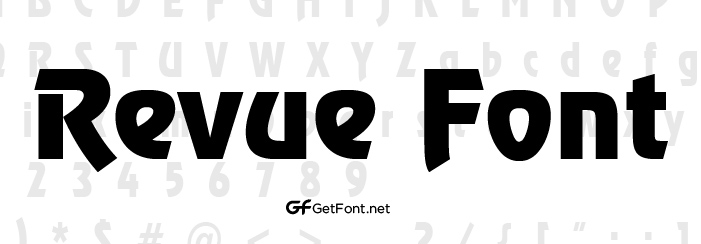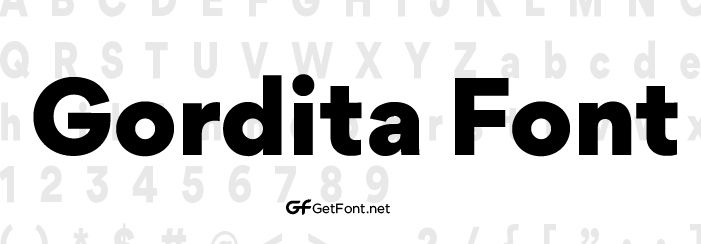Download Revue Font Now!
Revue is a geometric, sans-serif typeface created in 1957 by designer Georg Salden. It’s characterized by its modern and clean design, with narrow proportions and sharp edges. Revue is particularly well-known for its legibility and readability, which makes it a popular choice for both headlines and body copy. It has been used extensively in design projects for books, magazines, and newspapers, as well as in logos and advertising campaigns.
| Font Name: | Revue Font |
|---|---|
| Released Date: | 1957 |
| Publish Date: | N/A |
| File Size: | N/A |
| License Type: | Proprietary (Designer-Specific) |
| License Link: | N/A |
| Publisher: | N/A |
| Designer: | Georg Salden |
| Origin: | Germany |
The font is published by Monotype and is available in both serif and sans-serif versions. It has been used extensively in the United States and Europe and continues to be a popular font choice for many designers.
Revue Font Information



- Typeface: A typeface is a type of font that is used for writing. It can have different styles, shapes, sizes, and colors.
- Font Family: A font family is a collection of related fonts that have a similar look. The Revue font is part of a font family that includes different styles and weights.
- Serif Font: A serif font has small lines or slabs that stick out from the ends of its letters. The Revue font is a serif font.
- Sans Serif Font: A sans serif font does not have these extra lines. The Revue font is a sans-serif font, which means it looks cleaner and more modern.
- Kerning: Kerning is about how letters are spaced in relation to each other. The Revue font has a special feature that allows adjusting the spacing for better-looking text.
- Spacing: Spacing is the amount of space between each letter. The Revue font allows adjusting the letter spacing for better readability.
- OpenType Font: An OpenType font is a type of font that has advanced features. The Revue font is an OpenType font, meaning it can be used with special features like ligatures and old-style numerals.
Use Cases of Revue Font:
- Text: Revue font can be used in books, magazines, newsletters, and other documents.
- Publication: It is great for magazine/book covers, headlines, and attention-grabbing text.
- Website: Revue font can give a modern and professional look to websites, especially for important text.
- Logos: It’s suitable for creating memorable and powerful logos.
- Designs: It can be used in graphic design projects like posters and flyers.
- T-shirts: Revue font can be used to create eye-catching t-shirt designs.
Characteristics:
Revue is a classic serif font designed in the late 1960s. It has sharp serifs, high contrast between thick and thin strokes, and strong vertical strokes. The font family includes different weights and styles, making it suitable for various uses.
Comparison:
Compared to other sans-serif fonts, Revue has a more vintage feel with a hint of elegance. It has a slightly condensed width and rounded edges, giving it a modern and sophisticated look. It is highly legible even in small sizes, making it ideal for print media.
Alternative Fonts
1. Futura
2. Proxima Nova
3. Baskerville
4. Rockwell
5. Gill Sans
Tips & Tricks
1. Use different sizes of the same font to create a visual hierarchy. This will help draw the reader’s eye to specific elements of the page.
2. Use font weights to create emphasis. Bold or italic font weights can be used to highlight important words or phrases.
3. Use font styles to create contrast. For example, pairing a serif font with a sans-serif font can create a powerful contrast that is visually appealing.
4. Consider the color of the font. Depending on the context, the color of a font can have a big impact on the overall design.
5. Utilize font spacing. Playing with the letter spacing and line spacing of a font can help create a more balanced and aesthetically pleasing design.
6. Use ligatures to add character to your typography. Ligatures are special characters that link two letters together, creating unique letter combinations
Supported Languages
Font ReView supports the following languages:
-English
-German
-French
-Italian
-Spanish
-Portuguese
-Russian
-Chinese
-Japanese
-Korean
-Arabic
-Hebrew
-Greek
-Cyrillic
FAQs
Q: What is Revue font?
A: Revue is a typeface that was designed and released by Adobe in 1981. It is a serif font with a strong, bold look and a modern feel.
Q: What is the purpose of the Revue font?
A: The Revue font is used primarily for headlines and titles, but it can also be used in body text. It is a great choice for magazines, newspapers, and other publications that need to stand out and grab attention.
Q: What are the characteristics of the Revue font?
A: The Revue font has a strong, bold look with a modern feel. It has sharp, angular serifs with a large x-height and a strong contrast between thick and thin strokes.
Q: What is the best way to use the Revue font?
A: The Revue font is best used for headlines and titles. It is also great for setting off large blocks of text and making them stand out.
Q: What are some alternatives to the Revue font?
A: Some alternatives to the Revue font include Bembo, Garamond, and Times New Roman.
Q: What file formats are available for the Revue font?
A: The Revue font is available in Truetype (.ttf), OpenType (.otf), and PostScript (.ps) formats.







